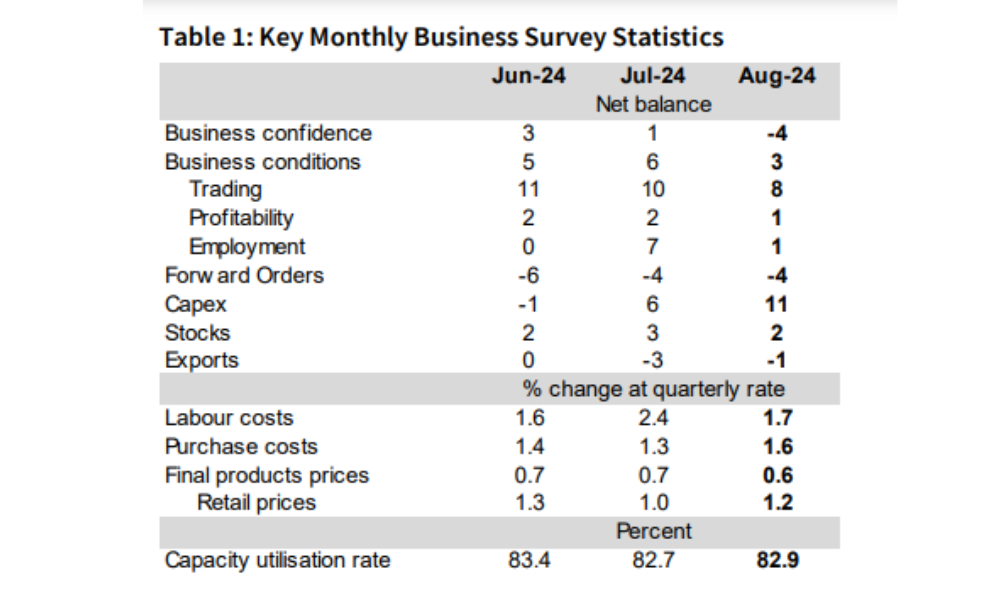

Business confidence took a dip in August, falling into negative territory after a brief resurgence in July.
According to the latest business survey from NAB, the overall business conditions index fell by three points, landing at +3, with the drop in the employment subcomponent serving as a primary contributor. NAB noted this downturn in labour demand reflects growing concerns that weakened trading conditions and declining profitability are impacting companies’ hiring plans.
The survey highlighted that business confidence plummeted by five points, bringing it down to -4 index points. Several industries, including recreation, personal services, transport, and utilities, experienced a significant decline. Retail and wholesale businesses continued to show particularly weak confidence levels, a trend that has persisted over the past few months.
The primary driver of the drop in business conditions was the employment subcomponent, which fell six points. This shift has suggested that ongoing weaker trading conditions and profitability are now directly affecting labour demand. While capacity utilization remained relatively strong at 82.9%, this was slightly lower than June’s levels, and forward orders stayed at a concerning -4 index points, which has remained unchanged for some time.
By industry, notable declines in business conditions were seen in wholesale (-18 points), manufacturing (-9 points), and retail (-6 points). Transport and utilities experienced a five-point drop, and the finance, business, and property sectors slipped by two points. The mining sector, however, bucked the trend with a sharp increase, while construction and recreation services saw marginal improvements, rising one point each.
At a state level, New South Wales and Victoria both recorded declines in business conditions, with drops of five and three points, respectively. Tasmania experienced a significant negative correction, though based on a smaller sample size, NAB noted.
Queensland remained stable, and Western Australia saw a modest increase of one point. In trend terms, Queensland and WA led the way with the strongest conditions, while retail conditions continued to struggle, sitting at -6 index points.


While labour cost growth eased in August, falling to 1.7% in quarterly equivalent terms from 2.4% in July, purchase cost growth picked up slightly, rising to 1.6%. NAB said this signals that businesses are still facing substantial cost pressures, particularly in purchasing, despite some relief in labour costs.
Retail price growth remained high, increasing to 1.2% from 1%, continuing to outpace broader output price inflation, which grew by only 0.6%. The retail sector’s continued price growth underscores the challenges businesses face in managing costs, while recreation and personal services saw their price growth ease to 0.8%, down from 1.2% in July.
Despite the softening in confidence and labour demand, capital expenditure (capex) increased by five points, reaching +11 index points. Capacity utilization, while elevated at 82.9%, shows a slight cooling from earlier highs.
Overall, the report has suggested that the recent weakness in the private sector, as observed in the latest National Accounts data for Q2, may be carrying over into the new financial year.
The next business survey report is scheduled for release on Oct. 8.
Do you have something to say about the latest findings? Let us know in the comments below.
